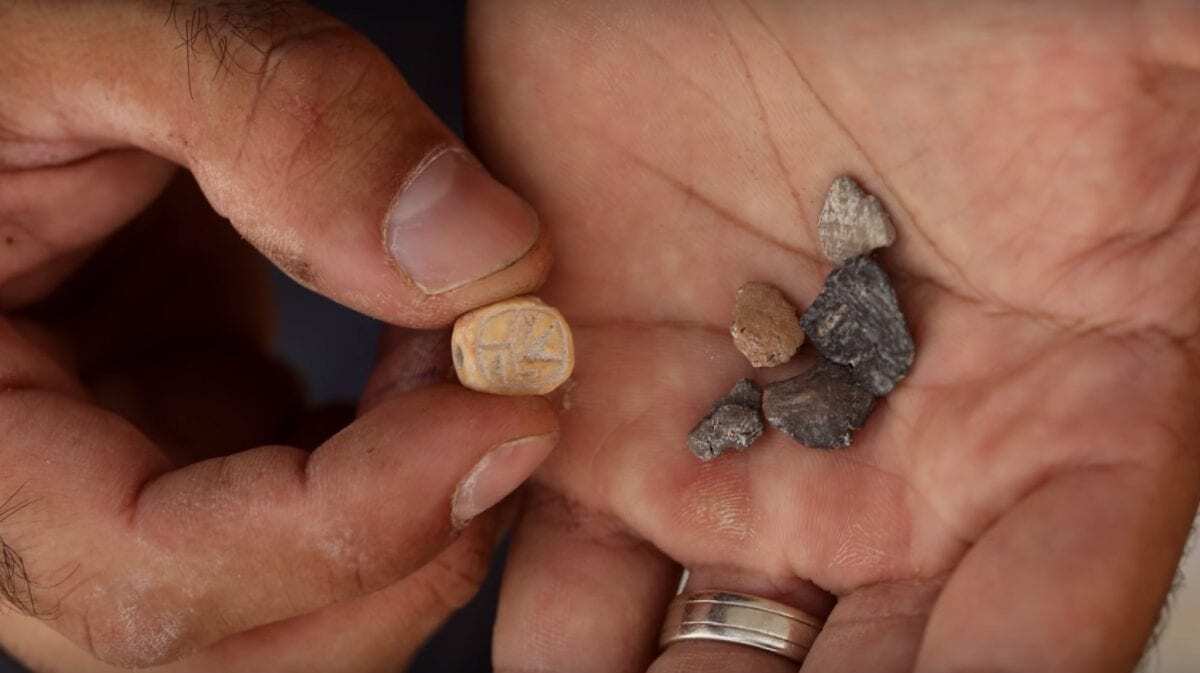Who was Achiav ben Menachem? A collection of dozens of sealings, mentioning the names of officials dated to the days of the Judean kingdom prior to the Babylonian destruction, was unearthed during excavations by the Israel Antiquities Authority in the City of David National Park in the area of the walls of Jerusalem, funded by the ELAD (El Ir David) organization.
The sealings (bullae- from which the Hebrew word for stamp, “bul”, is derived) are small pieces of clay which in ancient times served as seals for letters. A letter which arrived with its seal broken was a sign that the letter had been opened before reaching its destination. Although letters did not survive the horrible fire which consumed Jerusalem at its destruction, the seals, which were made of the abovementioned material that is similar to pottery, were actually well preserved thanks to the fire, and attest to the existence of the letters and their senders.
According to Ortal Chalaf and Dr. Joe Uziel, directors of the excavation for the Israel Antiquities Authority, “In the numerous excavations at the City of David, dozens of seals were unearthed, bearing witness to the developed administration of the city in the First Temple period. The earliest seals bear mostly a series of pictures; it appears that instead of writing the names of the clerks, symbols were used to show who the signatory was, or what he was sealing. In later stages of the period – from the time of King Hezekiah (around 700 BCE) and up to the destruction of Jerusalem in 586 BCE – the seals bear the names of clerks in early Hebrew script. Through these findings, we learn not only about the developed administrative systems in the city, but also about the residents and those who served in the civil service.”

Some of the seals bear biblical names, several of which are still used today, such as Pinchas. One particularly interesting seal mentions a man by the name of “Achiav ben Menachem.” These two names are known in the context of the Kingdom of Israel; Menachem was a king of Israel, while Achiav does not appear in the Bible, but his name resembles that of Achav (Ahab) – the infamous king of Israel from the tales of the prophet Elijah. Though the spelling of the name differs somewhat, it appears to be the same name. The version of the name which appears on the seal discovered – Achav – appears as well in the Book of Jeremiah in the Septuagint, as well as in Flavius Josephus (Antiquities of the Jews 15: 7-8).
Chalaf and Uziel add that the appearance of the name Achiav is interesting for two main reasons. First – because it serves as further testimony to the names which are familiar to us from the kingdom of Israel in the Bible, and which appear in Judah during the period following the destruction of the kingdom of Israel. “These names are part of the evidence that after the exile of the Tribes of Israel, refugees arrived in Jerusalem from the northern kingdom, and found their way into senior positions in Jerusalem’s administration”.
Furthermore, the sealings is the fact that the two names which appear on the seal- Achiav and Menachem- were names of kings of Israel. Though Achav (Ahab) is portrayed as a negative figure in the Bible, the name continues to be in use- though in a differently spelled version- both in Judea in the latter days of the First Temple, as reflected in Jeremiah and on the seal, and also after the destruction- in the Babylonian exile and up until the Second Temple period, as seen in the writings of Flavius Josephus.
The various stamps, along with other archaeological findings discovered in the recent excavations, will be exhibited to the public for the first time at the 18th City of David research conference, the annual archaeological conference held by the Megalim Institute, on September 7th at the City of David National Park.
Header Image Credit : IAA





